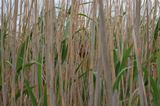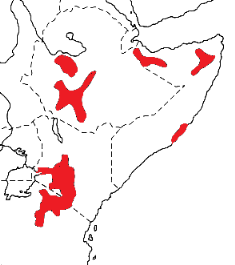Weaver species
Choose different species from drop-down list and press 'Go' button. See Full species list.Speke's Weaver Ploceus spekei
IUCN: Least concern Discovery: 062Categories: acacias, gum, Nest use, blue eggs,
News items about species
Discovery
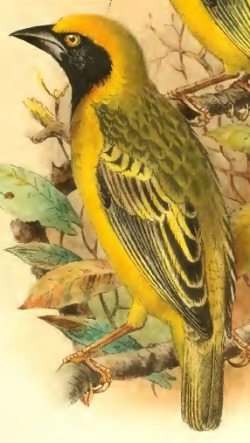
figure from Shelley (1905) 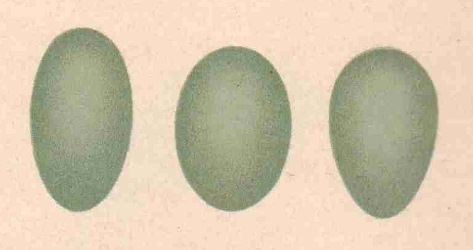
figure from Lonnberg (1911) 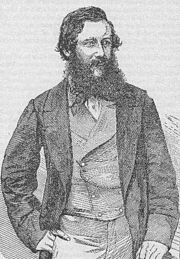
figure from wikipedia 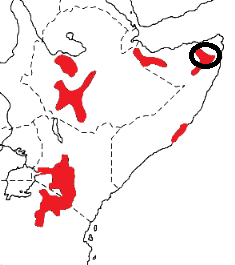
distribution, type locality circled IntroductionThe Speke's Weaver was formally described by Martin Theodor von Heuglin, a German explorer and ornithologist. It had first been described by Blyth (1856) but he used a pre-occupied name (Hyphantornis baglafecht) and it was later renamed by Heuglin.The Speke's Weaver had been collected by John Hanning Speke, an officer in the British Indian Army. Speke joined an expedition about to leave for Somaliland led by Richard Burton. Speke was accepted because he had traveled in remote regions alone before, had experience collecting and preserving natural history specimens and had done astronomical surveying. Initially the party split with Burton going to Harrar, Abyssinia, and Speke going to Wadi Nogal in Somaliland. Speke collected several new animals and birds on this trip, included a weaver which he thought was similar to the Baya Weaver which he would have seen while stationed in India. Speke sent his specimens to Blyth in India, and Blyth published descriptions (but mis-named Speke's Weaver). Speke later published some additional notes on the birds he collected, and wrote the following about Speke's Weaver:
The first illustration of the Speke's Weaver was of a male in breeding plumage, published by Shelley (1905). The next illustration pertaining to Speke's Weaver was by Lonnberg (1911), showing the variation in shape of the eggs of this species. Scientific citationHyphantornis spekei Heuglin 1861, In Petermann's Geog. Mitt., 1861, p.24 Somaliland.Meaning of namesspekei - After Captain John Hanning Speke (1827-1864) British explorer, the first European to see Lake Victoria.First English nameBaya bird (Speke 1860).Alternate namesSpeke's Weaver-Finch.CollectorCaptain John Hanning Speke.Date collected1854-55.Locality collectedSomali.Type specimensThe type specimen was in the Museum of Asian Society of Bengal, then apparently moved to the Calcutta Museum. |
The above is based on Weaver Wednesday 2, a weekly series about the discovery of each weaver species.
This species text first appeared as
Weaver Wednesday [179] - Discovery [62]: Speke's Weaver on 2015-11-18
1. Basic biology
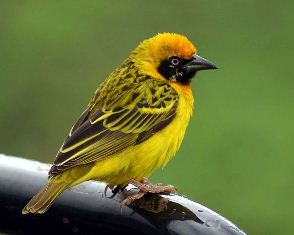

Identification. The Speke's Weaver is a large weaver with a long, heavy bill and pale eye in both sexes. The breeding male (see above) has the black mask extending to the upper breast where it is fringed with chestnut. The similar male Village Weaver has a red eye. The similar male Heuglin's Masked Weaver is smaller and does not overlap in range. The female Speke's Weaver is dull coloured and lacks the prominent yellow supercilium and bright yellow breast of the female Village Weaver.
Distribution. Speke's Weaver is common in East Africa, occurring in western Ethiopia, north and east Somalia, south-west and central Kenya to north central Tanzania (see map right, based on Birds of Africa). No subspecies of the Speke's Weaver are recognised. Habitat. Speke's Weaver inhabits bushed country and woodland with available water - nesting colonies may be abandoned if local water supplies run out. It is common in urban and suburban areas in Kenya. Food.
Speke's Weaver feeds on seeds including those of crops such as maize, and is regarded as a crop pest in some areas. It also feeds on insects, including alate termites, especially when feeding its young. It is generally found in small flocks.
Breeding.
Speke's Weaver is polygynous and colonial, but sometimes nests singly. It may breed in large mixed colonies with Lesser Masked Weavers or Chestnut Weavers. Of 40 colonies in Nairobi, 60% were near a busy road or occupied building, and 65% were sited in acacia trees (40% were in fever trees Acacia xanthophloea). Some nests have been built in Eucalyptus trees. Usually the entire colony is in a single tree, with 22-205 nests. More than half of the permanent colonies are active twice a year with breeding periods in Mar-May and Oct-Dec. Males arrive at the colony first to start nest construction.
The nest is a bulky, oval structure, with the entire upper surface attached to the underside of a twig. The entrance is narrow, with a short spout. The nest is roughly woven of grasses, including grass stems, stems with leaves and grass heads attached. There is an interior ceiling of grass heads and some acacia leaves. The chamber floor is lined with different grass heads. Unused or incomplete nests are torn down, to litter the ground below the nesting tree. The male builds a nest in 8-10 days, and a female adds lining once she has accepted a nest and male. One male may have 4-14 nests within a colony. Breeding success is reduced in nests with fly larvae Passeromyia heterochaeta, and some nests suffer from mites and fleas. Some colonies experience mass desertion, as shown by many dead chicks in colonies. Predators include Augur Buzzard Buteo augur, Yellow-billed Kite Milvus migrans and Gabar Goshawk Melierax gabar.
Newly-built nests, active or old nests of the Speke's Weaver may be used for breeding or roosting by a variety of species including Red-cheeked Cordon-bleau Uraeginthus bengalus, Northern Grey-headed Sparrows Passer diffusus, Cut-throat Finches Amadina fasciala, or Superb Starlings Spreo superbus. |
The above is based on Weaver Wednesday, a weekly series about weaver species.
This species text first appeared as
Weaver Wednesday [44]: Speke's Weaver on 2013-04-17
2. Breeding facts
| Pair bond Polygynous Breeding season Apr-Sept in Ethiopia, May-Jun in Somalia, Feb-Jul and Oct-Dec (peak Mar-Apr) in Kenya and Feb-May in Tanzania Nest site attached on upper suface to branch 2-7 m above ground, mostly in thorn tree, in Nairobi often near busy road or occupied building Nest building woven by male, lined by female Colony size Usually colonial, in Somalia small colonies of 4-6 males; in Kenya large colonies of 22-205 nests (all in single tree) Clutch size 1-4 eggs (average 2 in Kenya) Egg colour bright blue with darker cap at blunt end, rarely a few black spots Egg size average size of nine eggs 23.2 x 15.6 mm (Kenya) Incubation incubation by female only, period c. 11 days Chicks and nestling period chicks fed by both male and female, nestling period c. 16 days |
Breeding information based on Handbook of the Birds of the World, Vol. 15.
3. Photos of Weaver Nests
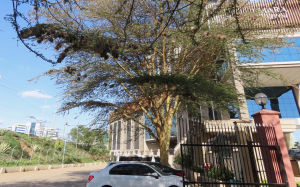 Vm 30678 | 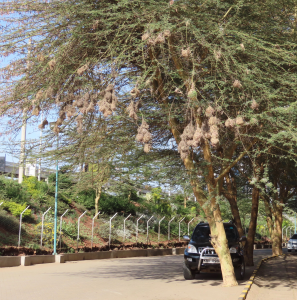 Vm 30677 | 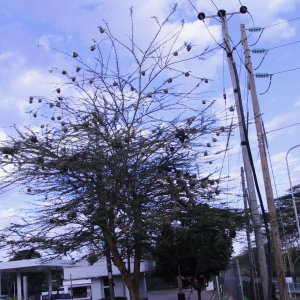 Vm 27760 | 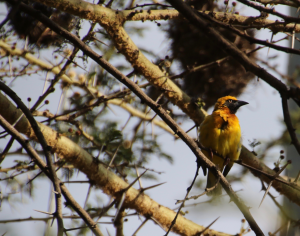 Vm 27655 | 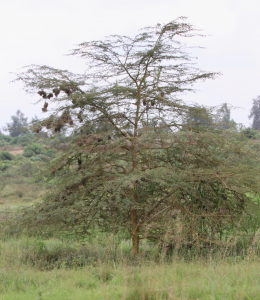 Vm 27642 |  Vm 27416 |
Thumb-nails of most recent PHOWN records - click on one to see its full record
See all PHOWN records for this species here.
PHOWN (Photos of Weaver Nests) provides valuable info on breeding distribution and colony sizes of weavers.
You can contribute by registering and submitting photos at Virtual Museum webpage.
4. Breeding distribution
Google map showing distribution (For species with small ranges you need to zoom in at the correct area to see the range):
yellow blob - range of weaver species; read more about this here.
![]() - PHOWN records with photos
- PHOWN records with photos
![]() - PHOWN records with no photos (Nest Record Cards, other records)
- PHOWN records with no photos (Nest Record Cards, other records)
![]() - Birdpix records
- Birdpix records
![]() - comments on out of range records, or interesting records
- comments on out of range records, or interesting records
![]() - type locality
- type locality
CLICK on the marker on the map to see individual record details.
5. Range changes
Not South African speciesThe above is based on Weaver Wednesday 3, a weekly series about range changes in South African weaver species.
This species text first appeared as
n/a








